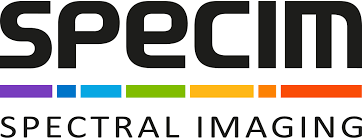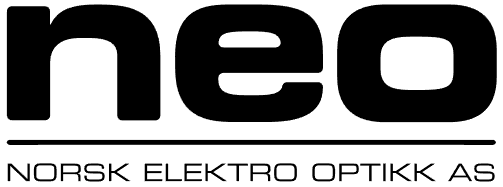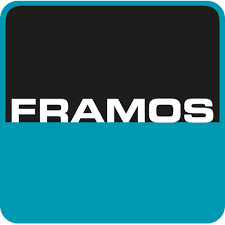Hyperspectral imaging isn’t just another tech buzzword-it’s like giving your eyes superpowers to see beyond the visible light, picking up on subtle chemical signatures in everything from crops to minerals. In 2025, as industries push for smarter, faster ways to analyze the world around us, these tools are stepping up big time. They capture hundreds of narrow spectral bands, turning raw data into actionable insights that save time and spot issues early.
Whether you’re in agriculture scouting for stressed plants or in mining hunting for ore veins, the right hyperspectral system can change the game. This roundup dives into some of the standout offerings from top players in the field, highlighting what makes them tick for real-world use.

1. FlyPix AI
We built FlyPix to handle satellite, aerial, and drone images with AI that spots and outlines objects in busy scenes, turning raw footage into clear maps of what’s there. The platform lets users upload images and run detections without diving into code, pulling out details like buildings or crops that might blend together otherwise. It’s set up for industries from construction to farming, where quick scans help track changes or plan ahead. One thing we noticed early on is how much time folks spend just labeling data manually, so we made the annotation part drag-and-drop simple.
On the backend, the system trains models based on what users mark up, adapting to specific needs like finding damaged roofs or healthy fields. Storage scales with plans, and credits track processing jobs, giving a way to manage workloads without surprises. Collaboration tools let groups share views or export layers, which comes in handy for joint projects. We’ve kept the interface straightforward, so even non-tech people can tweak settings and see results right away.
Key Highlights:
- Process satellite, aerial, and drone images with AI detection
- Train custom models using user annotations
- Include analytics dashboard for viewing results
- Support multispectral data handling
- Offer export and sharing options for maps
Who it’s best for:
- Construction firms monitoring site progress
- Farmers checking crop health from above
- Environmental groups mapping land changes
- Government offices planning urban developments
Contact Information:
- Website: flypix.ai
- Phone: +49 6151 2776497
- Email: info@flypix.ai
- Address: Robert-Bosch-Str. 7, 64293 Darmstadt, Germany
- LinkedIn: www.linkedin.com/company/flypix-ai

2. Specim
These cameras capture a wide spectrum, from visible to near-infrared and thermal ranges, allowing detailed material analysis through unique spectral signatures. Suited for fields like agriculture, food inspection, and environmental monitoring, they work well in both lab and outdoor settings, with options for scalability across different use cases. Integrated software enables real-time data processing, simplifying the interpretation of complex spectral information. Accessories, such as specialized lenses and mounts, ensure the cameras adapt to various setups, from machine vision to airborne surveys.
Supported by a comprehensive ecosystem, these cameras include calibration tools and consultation services to streamline integration into existing workflows. Their cost-efficient design focuses on delivering reliable performance throughout the equipment’s lifecycle. Users can adjust settings to detect specific materials or chemical compositions, which proves valuable in tasks like precision farming or mineral exploration. The hardware is built to withstand tough environments, making it dependable for both research and industrial applications.
Key Highlights:
- Capture a broad spectrum from visible to thermal wavelengths
- Provide software for real-time data analysis
- Allow customization for specific material detection
- Support machine vision and airborne applications
- Include calibration and integration support
Who it’s best for:
- Industries requiring precise material identification, such as agriculture or mining
- Research labs studying chemical compositions
- Machine vision integrators developing automated inspection systems
- Remote sensing professionals collecting aerial data
Contact Information:
- Website: www.specim.com
- Phone: +358 10 424 4400
- Email: info@specim.com
- Address: Elektroniikkatie 13 FI-90590 Oulu Finland
- LinkedIn: www.linkedin.com/company/specim-spectral-imaging-ltd-
- Facebook: www.facebook.com/specimspectral
- Twitter: x.com/specimspectral
- Instagram: www.instagram.com/specimspectral

3. Headwallphotonics
These systems pair hyperspectral cameras with precision optical components, designed for industrial inspection, machine vision, and remote sensing. The cameras deliver detailed spectral data across multiple wavelengths, enabling non-destructive material analysis in areas like food processing or cultural heritage preservation. Custom optical assemblies, built for high-volume production, ensure durability and consistent output. Software tools facilitate data visualization and seamless integration with existing workflows.
The components, including gratings and mirrors, enhance light collection and spectral resolution, making them ideal for OEM customers crafting specialized imaging solutions. Flexible mounting options allow deployment in diverse settings, from drones to factory floors. Calibration services maintain accuracy, and the modular design lets users adapt the systems to specific tasks, such as sorting recyclables or mapping geological features.
Key Highlights:
- Combine cameras with precision optical components
- Support industrial inspection and remote sensing
- Feature modular designs for flexible deployment
- Include software for data visualization
- Provide calibration for consistent accuracy
Who it’s best for:
- OEMs creating custom imaging solutions
- Factories automating quality control processes
- Researchers analyzing material properties non-destructively
- Environmental scientists conducting aerial surveys
Contact Information:
- Website: headwallphotonics.com
- Phone: +1 (978) 353-4100
- Email: info@perclass.com
- Address: 580 Main Street Bolton, Massachusetts 01740 United States
- LinkedIn: www.linkedin.com/company/headwall-usa
- Facebook: www.facebook.com/HeadwallUSA
- Twitter: x.com/headwall

4. Nireos
This suite of tools includes hyperspectral cameras, interferometers, photodetectors, and spectrometers, tailored for lab and industrial use. The cameras, operating in visible and infrared ranges, offer point-and-shoot functionality for analyzing artifacts, food quality, or pharmaceuticals. The interferometers deliver compact, high-throughput solutions for Fourier Transform spectroscopy, while the photodetector provides broadband spectral coverage with programmable gain. The spectrometer spans an ultra-broadband range, ideal for in-depth spectral analysis.
Each tool comes with advanced software for intuitive data processing and integration with optical systems. The cameras excel in non-invasive analysis, and the spectrometer offers rapid scans across a wide wavelength range. Compact designs make these tools practical for space-constrained labs, while their sturdy build suits industrial environments. Users can customize the systems to meet specific research or operational requirements.
Key Highlights:
- Include cameras, interferometers, photodetectors, and spectrometers
- Cover visible, infrared, and ultra-broadband ranges
- Provide user-friendly software for data processing
- Support non-invasive analysis for diverse applications
- Offer compact designs for lab and industrial settings
Who it’s best for:
- Researchers in spectroscopy and photonics
- Industries analyzing food quality or pharmaceuticals
- Art conservationists studying material composition
- Labs needing compact, high-precision spectroscopy tools
Contact Information:
- Website: nireos.com
- Address: Via Giovanni Durando, 39, 20158 Milano MI
- LinkedIn: www.linkedin.com/company/nireos
- Twitter: x.com/nireos_imaging

5. Exosens
Exosens delivers a range of imaging solutions that span from ultraviolet to long-wave infrared, capturing spectral data across a wide band for applications like life sciences, industrial control, and defense. Cameras in this lineup are designed to pick up fine details in material composition, useful for tasks like spotting defects in manufacturing or analyzing biological samples. The systems integrate with various setups, from lab-based experiments to field deployments, and include software for processing spectral data, making it easier to pull out meaningful patterns without invasive methods.
Built for demanding environments, these tools handle everything from low-light conditions to high-speed inspections. Accessories like specialized detectors for photons, electrons, or neutrons expand their use into niche areas like nuclear safety or space research. The focus on modularity means users can tweak configurations to fit specific needs, whether sorting materials on a production line or studying environmental changes from the air. It’s a practical setup for those needing broad spectral coverage with room to adapt.
Key Highlights:
- Cover ultraviolet to long-wave infrared spectral ranges
- Integrate with software for spectral data processing
- Support applications in life sciences, industry, and defense
- Include detectors for photons, electrons, and neutrons
- Allow modular configurations for diverse setups
Who it’s best for:
- Scientists researching material properties in labs
- Manufacturers inspecting products in real-time
- Defense professionals needing low-light imaging
- Environmental researchers studying spectral data from aerial surveys
Contact Information:
- Website: www.exosens.com
- LinkedIn: www.linkedin.com/company/exosens-group
- Facebook: www.facebook.com/ExosensGroup
- Instagram: www.instagram.com/exosens.group

6. Resonon
Resonon’s Pika cameras cover wavelengths from UV to SWIR, slotting into setups like drone-based remote sensing or lab-based analysis. Models like the Pika L are built for aerial surveys, capturing georegistered data over crops or forests, while IR versions focus on near-infrared to detect subtle material differences. Benchtop systems handle reflectance or transmission measurements, and the Bio-LIF model uses laser-induced fluorescence to dive into biological sample emissions. Nighttime imaging, with active lighting, stands out for pulling details from plants under low-light conditions.
The SpectralSight system, paired with RVS software, speeds up automated sorting, like classifying nuts or grains based on spectral signatures. Outdoor tripods make field work portable, while larger benchtop setups accommodate oversized samples, like artwork for conservation studies. Software integration feels smooth, handling data processing without external tools. The ready-to-fly airborne kits save time for users battling tight schedules or tricky weather.
Key Highlights:
- Cover UV to SWIR ranges for diverse applications
- Support airborne, benchtop, and outdoor configurations
- Include RVS software for sorting and data processing
- Enable reflectance, transmission, and fluorescence analysis
- Offer georegistration for drone-based surveys
Who it’s best for:
- Field researchers monitoring environmental or agricultural changes
- Manufacturers automating sorting for food or recyclables
- Lab scientists analyzing biological or large samples
- Drone operators mapping terrain with spectral data
Contact Information:
- Website: resonon.com
- Phone: +1.406.586.3356
- Email: inquiry@resonon.com
- Address: 123 Commercial Drive Bozeman, MT 59715 USA
- LinkedIn: www.linkedin.com/company/resonon

7. XRTech Group
XRTech Group focuses on drone systems that link up with 5G networks, packing them into automated boxes for ongoing monitoring in places like construction sites or security perimeters. These setups handle tasks from aerial inspections to real-time data grabs, with features like battery swaps to keep things running without much downtime. The integration with satellite imagery adds a layer, letting users overlay drone footage with broader orbital views for fuller pictures of large areas. It’s handy how the on-premise options keep data close, sidestepping cloud worries for sensitive spots.
Parachute systems built in add a safety net for mid-air hiccups, and the docks tie into DJI hardware for seamless ops. Custom AI modeling layers on top, processing feeds to flag changes or anomalies on the fly. Users often pair this with tethered modes for steady surveillance, blending portability with constant watch. One thing that catches the eye is how it scales for multi-drone runs, covering bigger zones without extra crews.
Key Highlights:
- Link drones to 5G for real-time data transmission
- Include battery swapping and parachute safety features
- Integrate with satellite imagery for combined views
- Offer on-premise data storage options
- Support automated deployments in boxes for continuous monitoring
Who it’s best for:
- Security teams watching industrial or residential sites
- Construction managers tracking progress from above
- Armed forces needing responsive aerial oversight
- Agriculture operators surveying fields with quick scans
Contact Information:
- Website: xrtechgroup.com
- Phone: +971 58 885 3151
- Email: support@xrtechgroup.com
- Address: The Plaza, Radisson Blu Hotel, Dubai Deira Creek, Dubai UAE

8. BaySpec
BaySpec crafts hyperspectral imagers that scan across wavelengths from 400 to 1700 nm, fitting into setups for spotting material differences in labs or out in the field. The custom builds let users tweak optics, mechanics, electronics, and software to match tricky jobs, like analyzing samples without breaking them open. Everything gets made in one spot in San Jose, which keeps things tight on quality and speeds up tweaks when needed. It’s straightforward how this in-house control avoids the usual back-and-forth with suppliers.
These imagers pair well with portable mass specs for on-the-go checks, pulling spectral data to ID compounds fast. The rugged design holds up in rough spots, and the full oversight from design to finish means fewer surprises down the line. A neat aside: the vertical setup lets them pivot quick for odd requests, like blending hyper and multispectral modes for finer detail work.
Key Highlights:
- Scan 400-1700 nm for material identification
- Allow customization of optics, mechanics, electronics, and software
- Manufacture all components in one facility
- Pair with portable mass spectrometers for field use
- Support rugged setups for demanding environments
Who it’s best for:
- Lab researchers probing chemical makeups
- Field techs doing non-destructive inspections
- Engineers building tailored spectral tools
- Industries sorting materials by composition
Contact Information:
- Website: www.bayspec.com
- Phone: +1(408)512-5928
- Email: sales@bayspec.com
- Address: 1101 McKay Drive San Jose, CA 95131, USA

9. Neo
Norsk Elektro Optikk develops electro-optical gear rooted in diode lasers, detectors, and spectroscopy tech, aimed at research and custom industrial needs. The systems draw from in-house designs in optics and electronics, covering IR and visual ranges for tasks like measuring light interactions in materials. Labs in Oslo handle everything from prototyping to testing, with a mix of physicists and engineers tweaking for specific gigs. It stands out how the focus on applied research keeps the output grounded in real puzzles, not just theory.
Custom products often stem from client briefs, blending software for data crunching with hardware for precise scans. The ISO certification nods to steady processes, and the workshop setup allows quick iterations on things like detector arrays. Participation in joint projects with bigger outfits brings fresh angles, especially where electro-optics meets bigger challenges like environmental sensing.
Key Highlights:
- Based on diode lasers, IR/visual detectors, and spectroscopy
- Design in-house for optics, electronics, and software
- Support custom builds from client requirements
- Use lab facilities for prototyping and testing
- Align with ISO quality standards
Who it’s best for:
- Research groups exploring light-material interactions
- Industries needing bespoke optical instruments
- Developers in electro-optics for joint ventures
- Labs handling spectral analysis in controlled settings
Contact Information:
- Website: www.neo.no
- Phone: + 47 6387 7000
- Address: Østensjøveien 34 N-0667 Oslo Norway
- LinkedIn: www.linkedin.com/company/norsk-elektro-optikk-as

10. Planet
Planet’s systems, like PlanetScope and SkySat, deliver satellite-based hyperspectral and high-resolution imagery for daily monitoring of large areas. PlanetScope focuses on broad coverage, capturing landmasses regularly to track changes in agriculture or urban zones, while SkySat zooms in with finer detail for close inspections, like port activity or infrastructure shifts. The platform processes data into analysis-ready formats, letting users dig into trends or baseline events without wading through raw feeds. It’s interesting how the daily imaging cadence keeps things current, catching shifts that slower systems might miss.
Integration with APIs and cloud setups makes it straightforward to pull data into custom workflows, whether for mapping soil moisture or spotting environmental changes. The systems also support backward analysis, letting users rewind to past events for context. Derived data layers, like soil water content, add depth to what’s visible, helping make sense of complex patterns. This setup works well for those needing both wide and detailed views from orbit.
Key Highlights:
- Provide daily broad coverage with PlanetScope
- Offer high-resolution imagery with SkySat
- Deliver analysis-ready data via APIs and cloud
- Support historical data for baseline analysis
- Include derived data like soil water content
Who it’s best for:
- Governments tracking large-scale environmental changes
- Businesses monitoring supply chains or infrastructure
- Researchers studying land use or climate trends
- Urban planners needing frequent, detailed imagery
Contact Information:
- Website: www.planet.com
- Address: 645 Harrison Street 4th Floor San Francisco, CA 94107
- LinkedIn: www.linkedin.com/company/planet-labs
- Facebook: www.facebook.com/PlanetLabs
- Twitter: x.com/planet
- Instagram: www.instagram.com/planetlabs

11. HORIBA
HORIBA’s OEM hyperspectral systems include spectrometers and imagers that scan from UV to NIR, capturing continuous spectral bands across thousands of pixels. These tools fit into applications like semiconductor inspection, food quality checks, or remote sensing via drones. The pushbroom imaging style grabs spectra for each pixel in a linear sweep, ideal for mapping material properties or spotting defects without contact. Customization options let users fine-tune for specific wavelengths or spatial resolutions, which is handy for niche tasks like DNA sequencing or combustion monitoring.
The systems come with fast USB 3 image transfer, making data handling smooth for high-throughput setups. Stability holds up even in fluctuating conditions, like thermal shifts, which keeps results consistent. Software support simplifies processing, turning raw spectra into usable insights. A practical detail: the compact design suits tight lab spaces or field rigs, giving flexibility for users juggling multiple environments.
Key Highlights:
- Cover UV to NIR with high spectral resolution
- Use pushbroom imaging for linear spectral capture
- Allow customization for specific applications
- Feature fast USB 3 data transfer
- Support stable performance in varying conditions
Who it’s best for:
- Semiconductor manufacturers inspecting materials
- Food and beverage industries checking quality
- Researchers in microscopy or process monitoring
- Drone operators conducting aerial spectral analysis
Contact Information:
- Website: www.horiba.com
- Phone: +43 2272 65225
- Address: Kaplanstrasse 5 A-3430 Tulln Austria
- LinkedIn: www.linkedin.com/company/horiba

12. FRAMOS
FRAMOS builds vision systems that integrate hyperspectral imaging for industries like agriculture, manufacturing, and drone-based mapping. These setups use advanced sensors to capture spectral data across multiple wavelengths, helping identify materials or defects that standard cameras miss. Paired with AI-powered modules, the systems process data on the fly, making them useful for real-time tasks like sorting recyclables or inspecting crops from the air. It’s neat how the modular approach lets users pick components like Sony or NVIDIA sensors to fit specific needs, whether for lab experiments or rugged field work.
Support spans from picking the right sensor to full system integration, with software tying everything together for smooth data handling. The systems work with global or rolling shutter sensors, which matters for fast-moving drone shots or static scans. European manufacturing keeps quality tight, and the focus on partnerships means access to cutting-edge tech without reinventing the wheel. One practical detail: blogs on the site dive into drone vision challenges, offering real-world tips for setup.
Key Highlights:
- Integrate hyperspectral sensors for material identification
- Support AI-powered real-time data processing
- Offer modular sensor and hardware options
- Include software for seamless data integration
- Provide end-to-end support from design to production
Who it’s best for:
- Drone operators mapping terrain or crops
- Manufacturers automating quality control
- Researchers analyzing materials in labs
- Engineers building custom vision systems
Contact Information:
- Website: framos.com
- Phone: 0049 89 710 667
- Address: Tölzer Str. 1 81379 München Germany
- LinkedIn: www.linkedin.com/company/framos-gmbh
- Facebook: www.facebook.com/framosimaging
- Twitter: x.com/framosimaging
- Instagram: www.instagram.com/framosimaging
Conclusion
Wrapping up this dive into hyperspectral imaging tools, it’s clear these systems are game-changers for seeing the world in ways our eyes just can’t. From picking out chemical quirks in crops to spotting defects on a factory line, the tech pulls invisible details into focus, helping folks make smarter calls faster. Each tool brings something a bit different-some lean into drone-ready setups, others nail lab precision or satellite-scale views. The variety means there’s likely a fit for whatever puzzle you’re tackling, whether it’s mapping a forest or sorting recyclables.
What stands out is how these tools don’t just spit out data-they’re built to fit real-world needs, with software that simplifies the number-crunching and hardware that holds up in tough spots. Picking one depends on your gig: airborne for big landscapes, benchtop for close-up work, or AI-driven for quick insights. It’s worth digging into specifics like wavelength range or integration options to match your workflow. Hyperspectral imaging’s not just for scientists anymore; it’s opening doors for anyone curious enough to look deeper.
